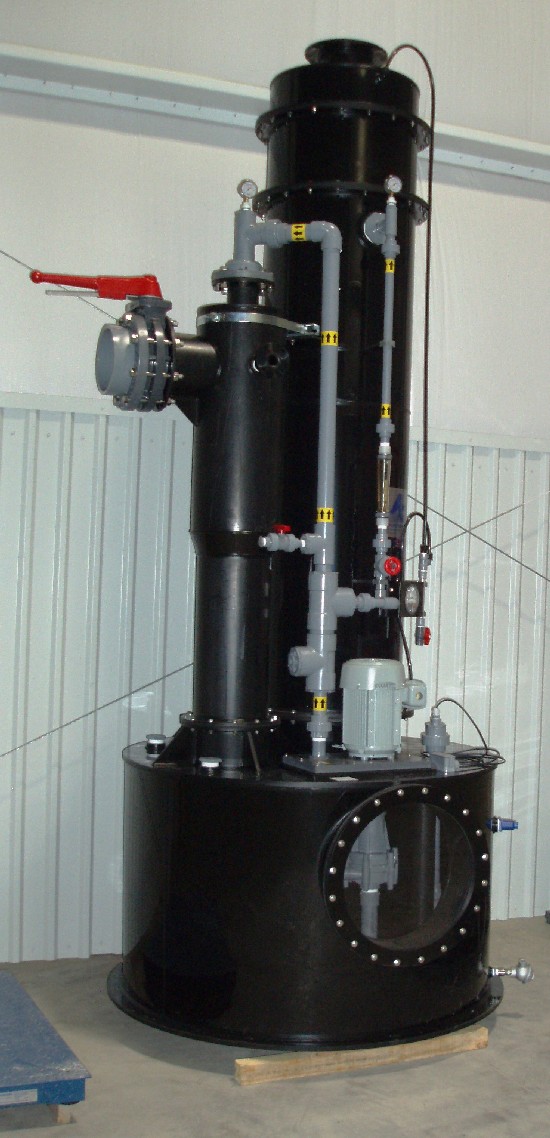Ammonia air scrubbers incorporate a variety of gas-liquid contacting techniques, including packed beds, spray chambers and water jets. In every application, AAT considers all factors in selecting the optimum design. We offer complete packages, including instrumentation and controls, skid-mounting of equipment, acid storage tanks and metering pumps, and installation. Ammonia (NH3) is a colorless, corrosive, pungent gas used in a variety of industries including pharmaceutical, fertilizer, food, chemical, and semiconductor. It has an explosive range in air, from 16 to 25 percent by volume, and is moderately toxic. It has an Immediately Dangerous to Life and Health (IDLH) concentration of 300 ppmv with an OSHA Permissible Exposure Limit (PEL) of 50 ppmv. The odor threshold for ammonia is 5 ppmv, giving ample olfactory warning of potential danger. Although ammonia is not a Hazardous Air Pollutant (HAP), it is regulated as a precursor to PM2.5 and PM10 Criteria Air Pollutants. This is because it reacts with acid gas pollutants to form respective ammonium salts in the atmosphere. Aqueous ammonia solutions have very high vapor pressure, which prevents plain water from being recycled in an air scrubber. After a single pass through the air scrubber, water becomes a solution of dilute ammonium hydroxide (aqua-ammonia), for which some plants may have a use. Due to the alkalinity of NH3, it is very effectively scrubbed using an acid solution. The most common acid used in air scrubbers is sulfuric acid, which, when used to scrub ammonia, forms ammonium sulfate. This by-product is a common fertilizer ingredient, and may have market value.



